More efficient? Duke Energy is building a floating solar farm on a cooling pond in Bartow
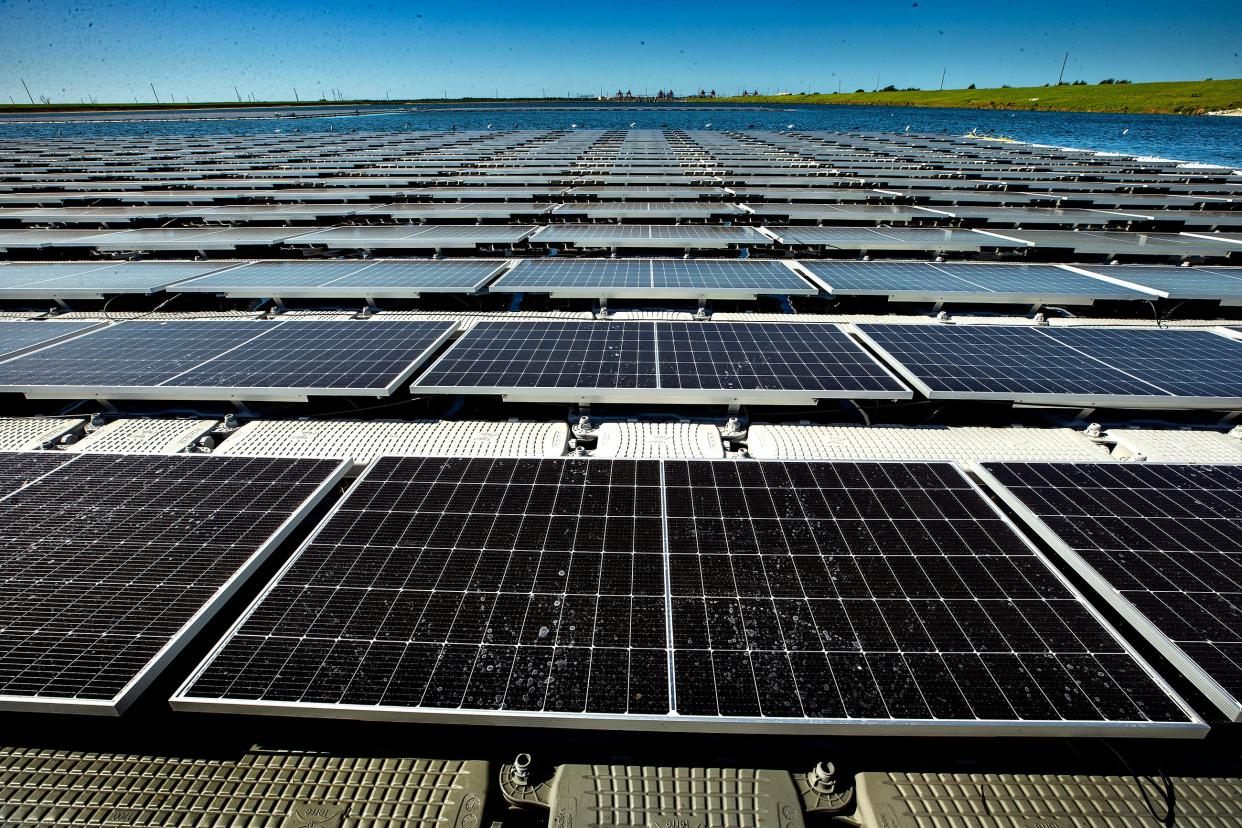
Duke Energy has begun construction on a floating solar project at its Hines Energy Complex in Bartow.
The two-acre pilot on water will include 1,800 solar modules that can produce nearly 1 megawatt of electricity and about 1 million kilowatt-hours annually.
The floating array at 7700 County Road 555 in Bartow will be installed starting this month on an existing 1,200-acre cooling pond, which was once a phosphate mining pit. At peak output, the array could generate enough electricity to power nearly 100 local homes.
At a groundbreaking on Monday, Shayna White, Duke’s Florida project manager, said the small-scale pilot on Duke property will be a test to determine if the technology behind floating solar arrays have better efficiency and capabilities than land-based solar farms.
“The water should have a cooling effect to help them operate more efficiently,” White said, explaining cooler solar panels are more efficient energy producers.
A solar far? Talk of renewable-energy farm near Florida Poly reignites dream of an innovation district
State budget Polk receives plenty in state budget for education, roads, water projects and more
Florida's first South Korean company plans to build hydrogen fuel plant in Mulberry
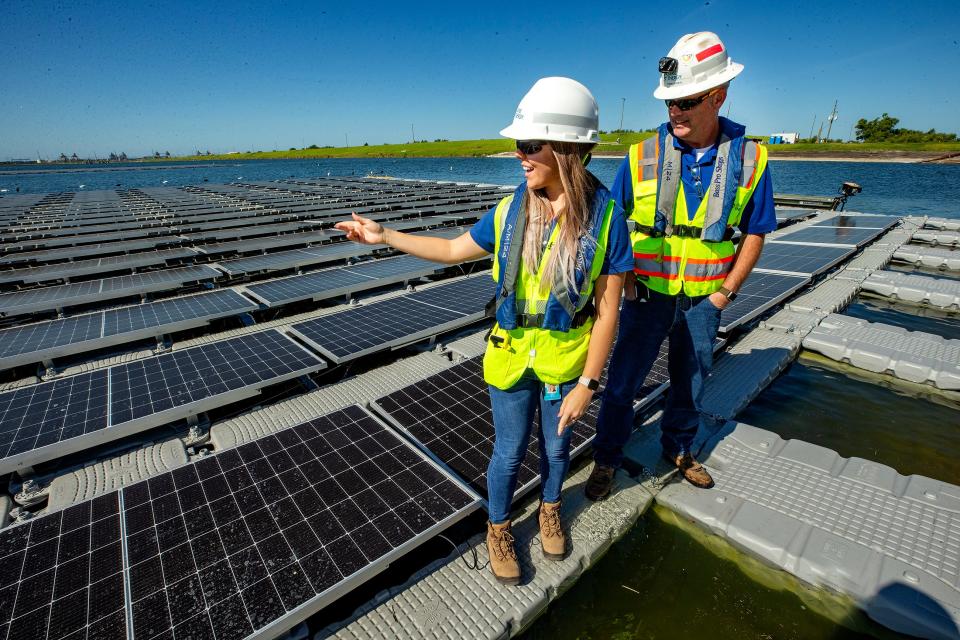
“We're also doing bifacial modules so they'll be picking up energy from the top and the bottom of the module as the Sun is reflecting off the water,“ she said.
“On a larger scale, it would in theory decrease evaporation in the pond” because the panels shade the water from sunlight, but she only expects that to be a small impact with this small of a pilot array.
The solar modules will rest on rectangular floating dock-like bases, she said. The solar panels will be fixed and facing south as they collect sunlight. They should be producing power by mid-July to early-August.
“The cooling pond is essentially a radiator for the plant. It’s a great place to start a pilot project like this,” said Tommy Oneal, Duke Energy Florida’s environmental specialist.
The construction phase of the project will employ about 15 workers for up to six months.
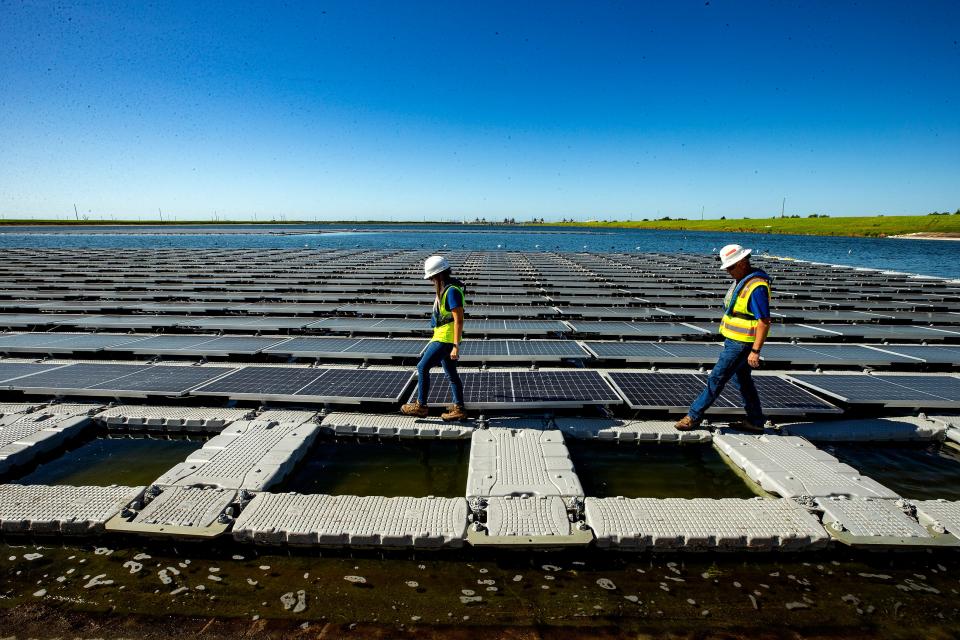
“We’re excited to get hands-on experience with Duke Energy Florida’s first floating solar project at one of our own power plant sites,” said Melissa Seixas, Duke Energy Florida state president, in a recent press release.
“Unique pilots like floating solar are helping us better understand the capabilities of innovative clean energy technologies that can benefit our Florida customers and communities now and in the future.”
At the Bartow pilot project, crews will construct and assemble the floating system on land in segments before securing it with anchors in the water. The project will take approximately five to six months.
“The pilot is part of Duke Energy's Vision Florida program, which is designed to test innovative projects such as microgrids and battery energy storage, among others, to prepare the power grid for a clean energy future,” it said in a press release.
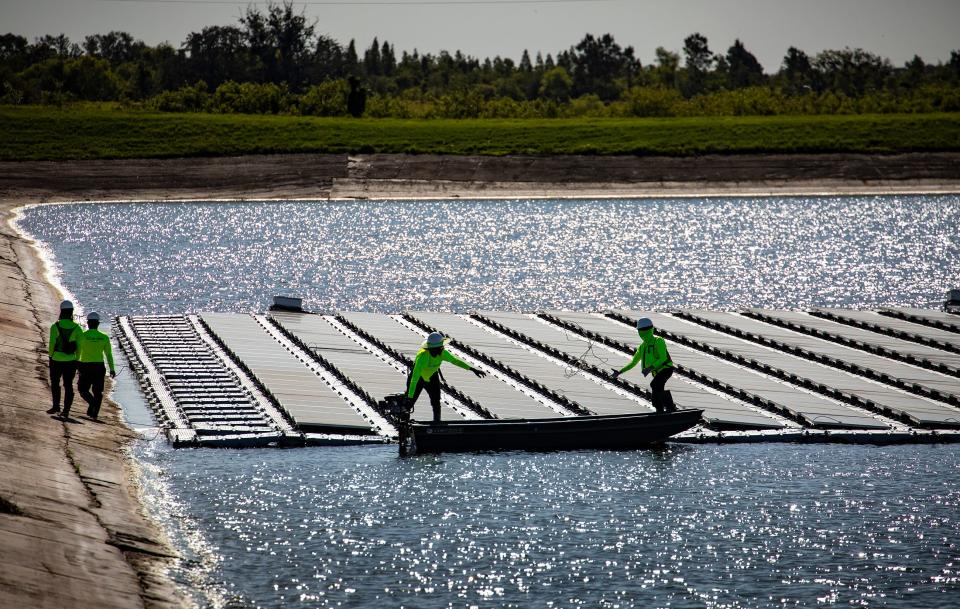
The company has interim carbon emission targets of at least 50% reduction from electric generation by 2030 and 80% reduction by 2040, Duke said.
In addition, the company is investing in major electric grid enhancements and energy storage and exploring zero-emission power generation technologies such as hydrogen and advanced nuclear, it said.
“The company is well on its way to meeting a major milestone by placing its 21st solar project in operation by the end of this year,” said Audrey Stasko, spokeswoman for Duke Energy.
The Bartow installation will be Duke Energy’s first floating solar pilot and its first solar project in Polk County, she said.
Duke Energy has added 700 megawatts of solar energy at 10 facilities in Florida between 2018 and 2022. Every 100 megawatts can power 16,400 U.S. homes.
The utility’s goal is to increase solar power capabilities to a total of 1,500 megawatts at 25 solar plants by 2024, the utility said. In Duke Energy Florida’s 10-Year Site Plan, the company expects to have more than 4,500 megawatts of utility scale solar generating capacity online by 2032.
“We’ve made great progress in our transition to cleaner energy and we continue to invest in and explore technology that will help us achieve our path to net zero,” Stasko said.
Based on Duke Energy Florida’s current fuel mix, each 74.9 megawatt solar facility displaces about 1.2 million cubic feet of natural gas, 15,000 barrels of fuel oil and 12,000 tons of coal each year.
When asked if solar-produced electricity would lower power bills, Stasko said, “As a result of Duke Energy’s continued commitment to solar investments, Duke Energy is already passing approximately $56 million of corporate tax savings annually to Florida customers from the Inflation Reduction Act.
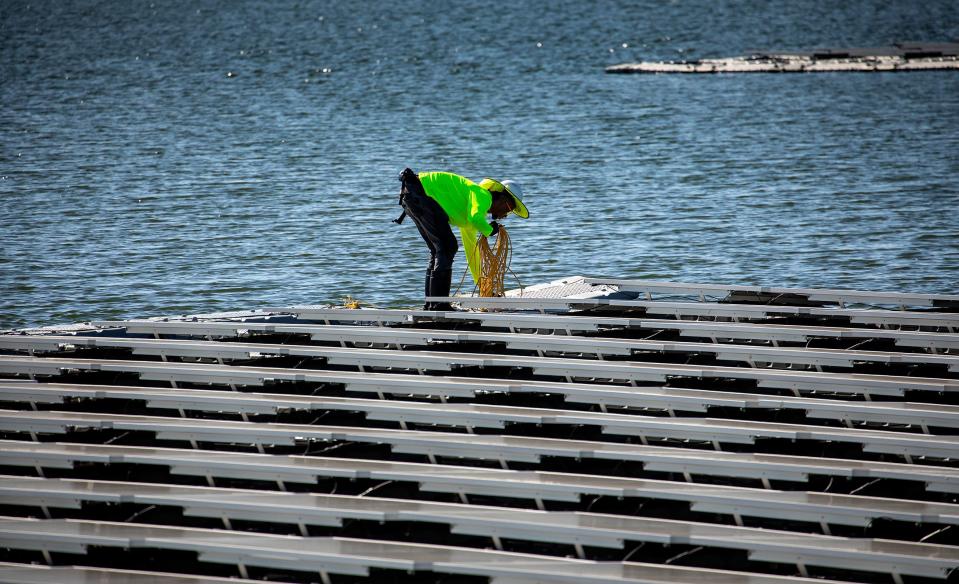
“For residential customers, this resulted in a decrease of $1.90 per 1,000 kilowatt-hours that began in January 2023,” she said. “Additionally, the company is refunding Florida customers another $11.7 million in tax savings from 2022 solar generation.”
Duke Energy Florida, a subsidiary of Charlotte, N.C.-based Duke Energy, owns 10,500 megawatts of energy capacity, supplying electricity to 1.9 million residential, commercial and industrial customers across a 13,000-square-mile service area in Florida, it said.
Across the U.S., Duke Energy is one of the nation's largest energy holding companies. Its electric utilities serve 8.2 million customers in North Carolina, South Carolina, Florida, Indiana, Ohio and Kentucky, and collectively own 50,000 megawatts of energy capacity.
Its natural gas unit serves 1.6 million customers in North Carolina, South Carolina, Tennessee, Ohio and Kentucky. The company employs 27,600 people.
This article originally appeared on The Ledger: Duke Energy is building its first floating solar farm in Bartow

